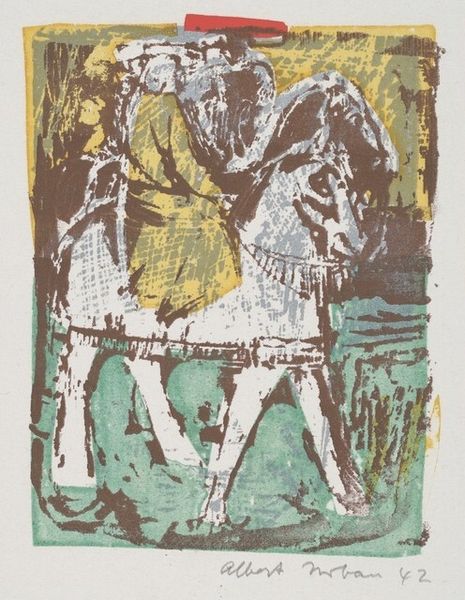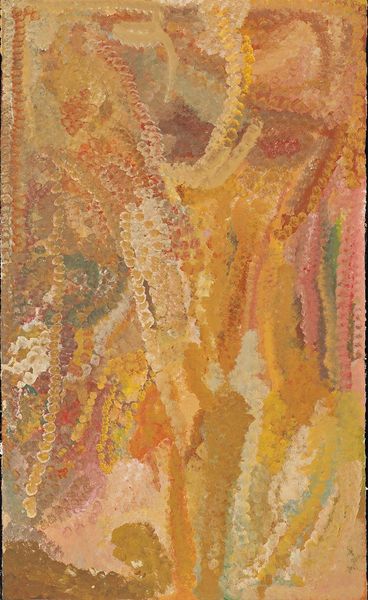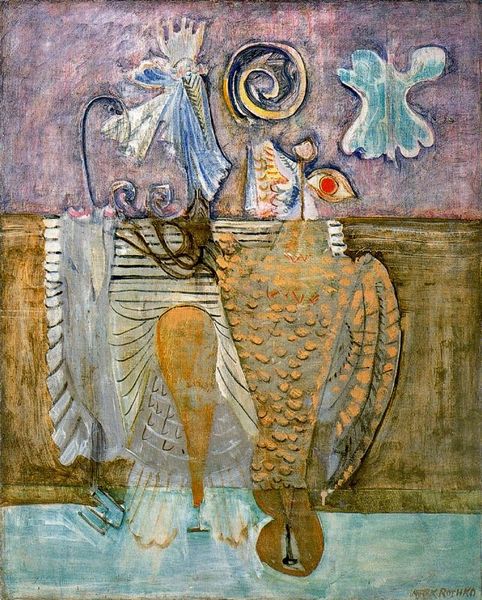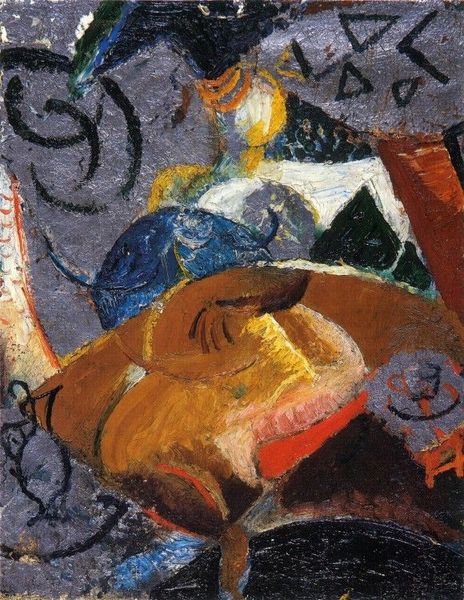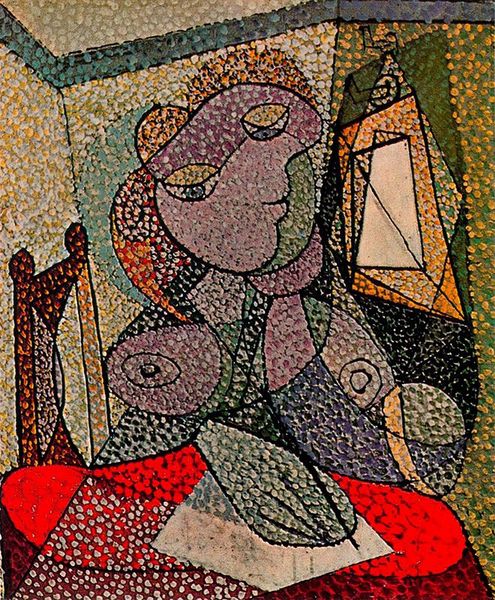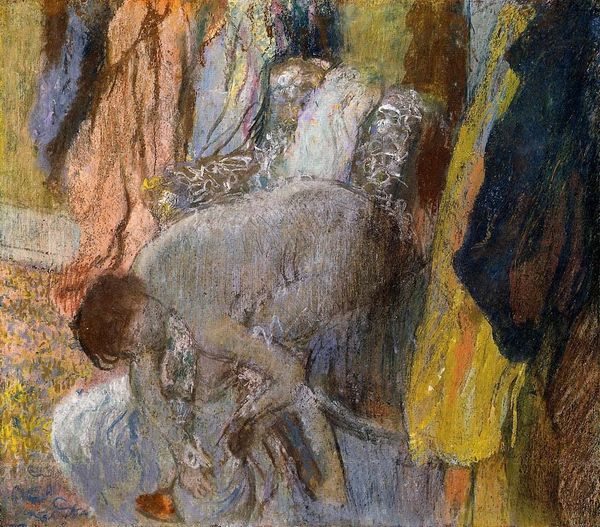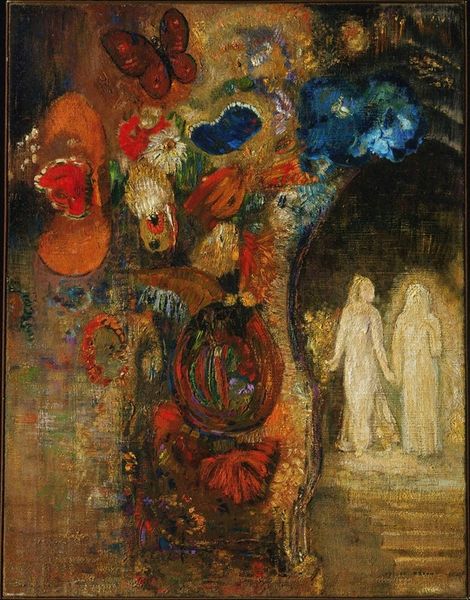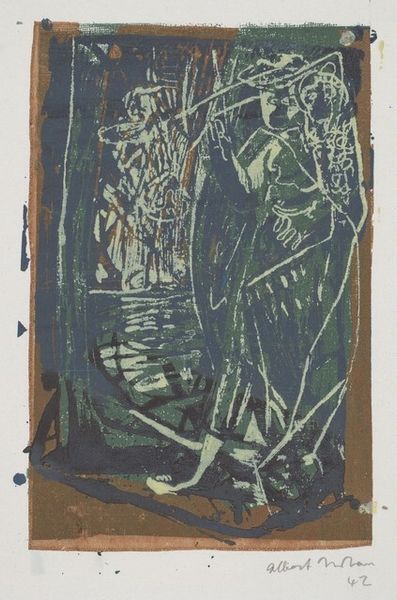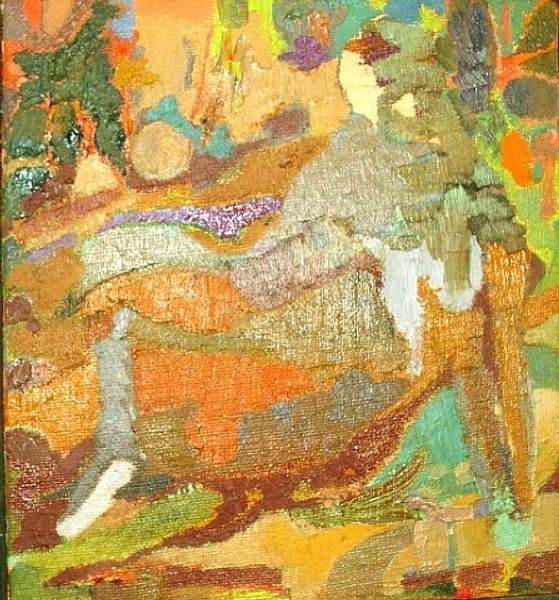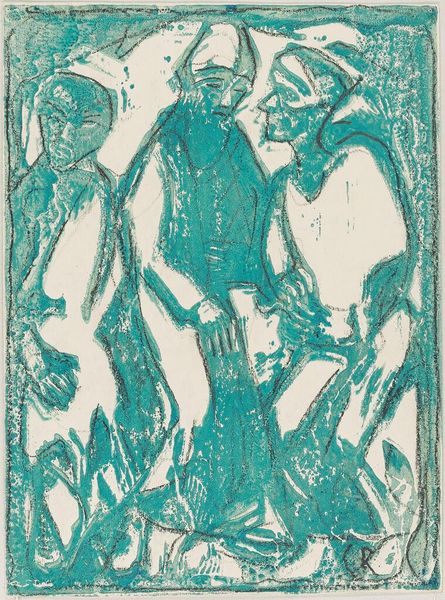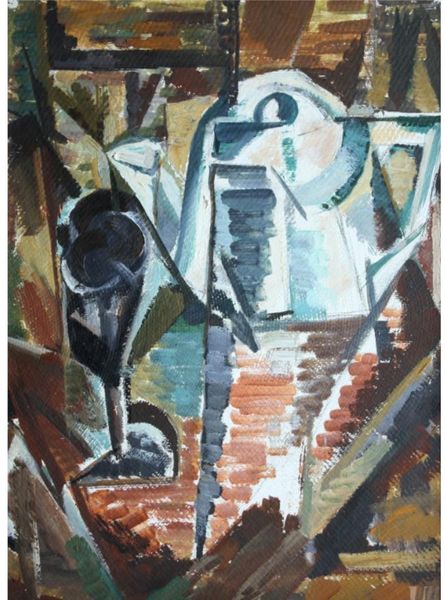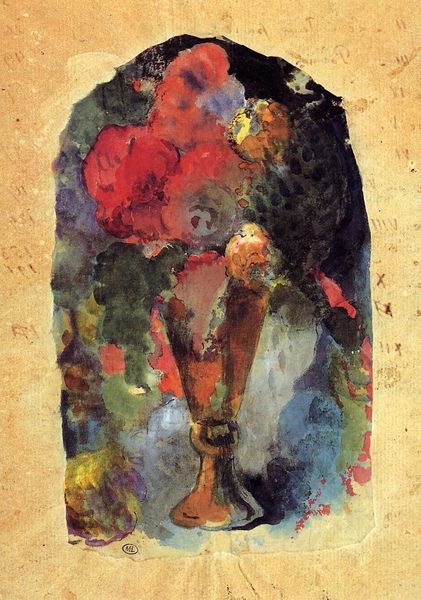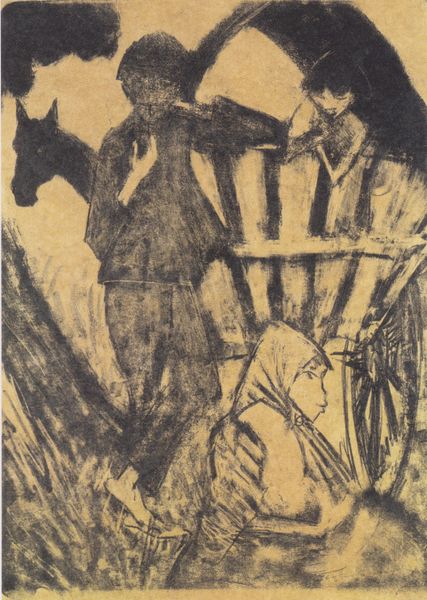
oil-paint, impasto
#
oil-paint
#
oil painting
#
impasto
#
orientalism
#
symbolism
#
post-impressionism
Copyright: Public domain
Paul Gauguin created this enigmatic still life, with its unusual collection of objects, at some point during his career. The horse’s head, Japanese fan, and doll in national costume might seem like a random assortment, but in the context of late 19th-century Paris, they speak volumes about the cultural milieu of the time. Japan was opened up to trade with Europe and the Americas in the 1850s. Japanese art and design became a craze in France. Gauguin was an avid collector of such items and they appear in many of his paintings, where their presence evokes a world that is distant, exotic, and somehow more authentic than that of modern Europe. Art historians can use trade statistics, exhibition catalogues, and even novels to better understand the meanings that these things held for Gauguin and his audience. We understand artworks better when we consider their place in broader patterns of social and cultural exchange.
Comments
No comments
Be the first to comment and join the conversation on the ultimate creative platform.
